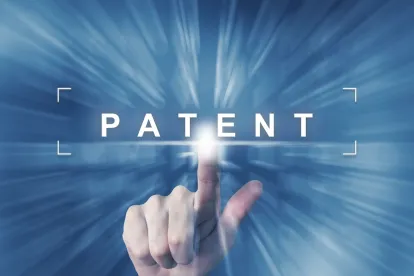Why should companies considering trade secret litigation consider their patent portfolios? After all, trade secrets, by definition, are secret. They have value in the marketplace by virtue of not being disclosed. And like the formula for Coca-Cola, that value can continue perpetually as long as the secrecy of trade secrets is maintained. Patents, on the other hand, represent a limited monopoly granted to the patent-holder in exchange for an enabling disclosure of the patented invention, a disclosure sufficient to enable those skilled in the art to practice the invention. Of course, this public disclosure requirement for patentability destroys secrecy. This means that once the invention is disclosed in a published patent or application, it cannot be subject to trade secret protection. In the context of a litigation concerning whether a claimed trade secret is covered by a patent, the interface between trade secret protection and patent protection can become existential. The defendant may contend that once the claimed trade secrets found their way into the patent’s enabling disclosure, they lost any trade secret protection. The plaintiff will try to delineate sharply between technology covered by the patent and its disclosures, and technology that remains undisclosed and thus properly subject to trade secret protection. So a proper understanding of the interplay between trade secret protection and patent protection can be critical to the outcome in a trade secret case.
A recent petition for certioriari to the Supreme Court illustrates the point. The petitioner, Taiwan computer company Acer, Inc., filed the petition in connection with a state trade secret misappropriation action brought against Acer in California state court brought by by Intellisoft, Ltd.[1] After over two years of litigation, Acer determined based on reports and testimony from Intellisoft’s experts that Intellisoft’s trade secret misappropriation claims rested on Intellisoft’s experts’ contention that Intellisoft’s trade secrets were disclosed by Acer in the specifications of Acer’s U.S. Patent No. 5,410,713 (the ‘713 Patent); that the disclosed secrets were invented by Intellisoft’s Bruce Bierman; that the incorporation of those secrets in the ‘713 Patent breached the terms of a Non-Disclosure Agreement (NDA) arising from a business relationship between the two companies; and that Acer’s devices used the trade secrets Acer incorporated into the ‘713 Patent, thereby entitling Intellisoft to some $300 million in royalty damages. Armed with this information, Acer promptly filed in the California misappropriation lawsuit a “cross-complaint” for declaratory judgment that Bierman properly was not named as an inventor on the ‘713 Patent, and it simultaneously removed the action to U.S. district court on the basis that the trade secret misappropriation arose under federal patent law. Intellisoft moved to remand the case back to state court. Intellisoft’s remand petition starkly presented the key issue to the district court: Did Intellisoft’s claims of trade secret ownership, misappropriation and damages necessarily hinge on patent law issues of inventorship, claim construction and infringement?
Yes, concluded the district court, noting that Intellisoft “ha[d] only advanced one theory of liability and that theory necessarily raise[d] substantial patent law issues, and the case “boil[ed] down to an inventorship dispute.” Intellisoft, Ltd. v. Acer America Corp., 2018 WL 6421872, at pages 8-9, 16 (N.D. Cal. Dec. 6, 2018). The district court went on to grant summary judgment in favor of Acer, reasoning that Intellisoft failed to prove under federal patent law that Bierman was the inventor of the patent claims at issue. Id. at 29-30.
But the Federal Circuit disagreed. Intellisoft, Ltd. v. Acer America Corp., 955 F.3d 927 (Fed. Cir. 2020). Under its analysis, Intellisoft did not need to prove that Bierman was an inventor of the claims in the ‘713 Patent, only that Intellisoft was the owner of the trade secrets by assignment from Bierman. Trade secret ownership, it concluded, was a matter of California state law that did not necessarily depend on patent laws. Id. at 932. In addition, it reasoned that Intellisoft did not need to establish patent infringement; it only had to show that Acer misappropriated the trade secrets under California state law. Id. Nor did it need to prove that Acer’s products infringed the relevant patent claims in order to prove trade secret damages. Id. at 933. It concluded that the state law claims did not necessarily require resolution of a substantial patent question so as to warrant removal under section 1441(a) for claims that “necessarily arise” under patent law. Id. The Federal Circuit likewise rejected removal under section 1454(a), noting that Acer’s “cross-claim” had been “lodged” but not accepted by the state court and concluding that “the claim supporting removal must be contained in an operative pleading.” Inasmuch as Acer had not obtained leave of the state court to file the cross-complaint, the patent declaratory judgment issues did not meet the test of being “contained in an operative pleading.” Id. at 934-35. The Federal Circuit therefore vacated the district court’s judgment and reversed the district court’s denial of Intellisoft’s motion to remand, ordering the case remanded to the California state court. Id. at 936.
In its appeal to the Supreme Court, penned by retired Federal Circuit Chief Judge Randall R. Rader, Acer argues that the Federal Circuit turned a blind eye to Supreme Court precedent in Gunn v. Minton, 568 U.S. 251 (2013), ignoring the district court’s finding that Intellisoft’s single theory “necessarily raises” patent issues, thus qualifying the case for removal under 28 U.S.C. § 1441. Acer also chides the Federal Circuit for rejecting removal under 28 U.S.C. § 1454 by departing from the plain language and purpose of section 1454, equating the statutory term “assert” with the more restrictive term “brought” to reject Acer’s “cross-complaint” that had been lodged but not yet accepted by the state court and holding that the “cross-complaint” claims did not meet the statutory requirement of being in an operative pleading. According to Acer, the Federal Circuit’s decision “abdicates the federal judiciary’s removal determinations to the permissive whims of state courts,” leaving federal jurisdiction questions to turn “on the accident of state procedural rules and/or the discretion of individual state court judges.”[2]
With a $300 million damage claim hanging in the balance, the dispute is hardly inconsequential. Intellisoft likely believes it will fare better under the less exacting standards of state trade secret misappropriation law, where it need only show that it owns the trade secrets and that it was injured by Acer’s unauthorized use of those secrets. Conversely, Acer likely recognizes that its prospects of prevailing are better under the higher clear and convincing burden required to demonstrate patent inventorship and the burden of demonstrating patent infringement, a position already confirmed by the district court’s summary judgment determination in Acer’s favor.
At bottom, Acer’s appeal to the Supreme Court confirms the critical importance of understanding the interface between trade secret law and patent law, and the potentially different burdens of proof involved for different types of claims, before bringing a trade secret misappropriation case.[3]
Trade secret misappropriation and patent disputes impact businesses across a variety of industries, and the consequences can be severe. A wise strategy for potential litigants is to consider carefully which company innovations qualify for trade secret protection, which are covered by patent disclosures, and how the two types of intellectual property inter-relate. Potential litigants should promptly consult with experienced trade secret and patent litigation counsel to guide them through this conceptual thicket.
FOOTNOTES
[1] Acer America Corp., et al. v. Intellisoft, Ltd., et al., Case No. 20-313 (S. Ct. filed Sept. 10, 2020) (“Petition”).
[2] Petition at 16-17.
[3] An interesting hypothetical involves whether the outcome – or at least Intellisoft’s argument — would have been different had it been able to bring its trade secret misappropriation claim in 2014 under the subsequently enacted Federal Defend Trade Secrets Act of 2016 instead of under state trade secret misappropriation law. Federal patent preemption applies only to state law claims. Because patent law does not preempt other federal statutes, it is reasonable to consider that if the claim could have been brought under the federal statute, the standard for ownership would be defined by the Defend Trade Secrets Act and not by patent law.



 />i
/>i
